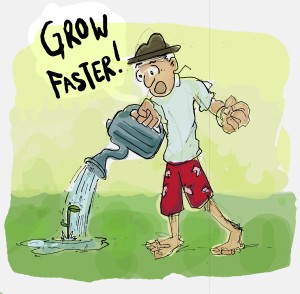 Out for our anniversary recently, my wife and I were talking about my Strategy Games Classes. She's a teacher too and is both very clever and very practical so she makes a great sounding board as I look for ways to improve the upcoming year's classes.
Out for our anniversary recently, my wife and I were talking about my Strategy Games Classes. She's a teacher too and is both very clever and very practical so she makes a great sounding board as I look for ways to improve the upcoming year's classes.I realize that, by the grace of God, I've been afforded a very rare opportunity: I get to teach what I know best, it's something I love, it actually interests students, and it has tremendous potential intellectual benefits for young people!
What's more, I have wonderful leaders within my school building who let me experiment and try things that are outside of the norm. It also helps that my role is to provide enrichment for 26-35 students at a time while kids who need intensive math and reading interventions are receiving help in those areas in much smaller classes.
Still, we operate under a mandate to show quantifiable student growth within the 9-week period (about 17 classes on average) implementing some kind of pre-assessment and some form of post assessment that demonstrate change over time.
 |
| by Gido at deviant art |
While at times this is a bit like paying a toll to the troll, I get it -- being able to show quantitatively that a course is actually helping young people grow is very reasonable and appropriate and isn't anything I would expect from any other educator or class -- I'm a tax payer too after all!
Tabletop role-playing, specifically Basic Dungeons & Dragons was incredibly important in my own growth (though I moved on to Star Frontiers, Gamma World, AD&D, Robotech, Marvel Superheroes, TMNT, Shadowrun, Earthdawn, GURPs, Vampire, Werewolf, Pendragon and others in due course).
Here are some of the ways that RPGs helped me grow:
- helped me further develop number sense and drove home arithmetic in an engaging way (especially my multiplication tables)
- got me working with percentages and thinking about probability
- improved my working literacy well above grade level while working with informational text -- my vocabulary expanded like nuts (which is what reading Gygax will do for you)
- helped me with both geography and spatial relationships as I used maps and created my own maps and map keys
- expanded my tastes in fiction
- got me interpreting and later developing my own charts and graphic organizers
- encouraged my interest in artwork
- helped me develop social and leadership skills, especially as I managed the game for players older than I was
- encouraged asymmetrical and abstract thinking along with problem-solving
- got me thinking about plot, rising action, foreshadowing and irony by both reading th work of industry professionals and by composing my own material (the very best way to learn of course)

All this growth didn't take place overnight of course, instead unfolding over the course of years.
My personal timeline went something like this:
- play for an hour and a half (in a group of 3), only understanding half of what was going on
- play again for a little while, with some of the basic concepts starting to click
- not role-play for 3 and a half years, but cultivate memories of monster-haunted passageways
- play AD&D in someone else's campaign for maybe 45 minutes (I was "Kratz," the half-orc henchman)
- self-teach using Moldvay Basic D&D (with me as DM ) first running games for my older brother and a friend, then for three neighborhood friends, then for an ever-expanding circle of friends from school, first integrating the AD&D Monster Manual, then Players Handbook, then the unequaled Dungeon Masters Guide into my Basic D&D game.
- ... and continue onward for 30 years
The main thing was that, by the time I picked up the Moldvay box, the game was a PULL factor -- nobody had to push me into staring at those charts or squinting away at column after column of that little sans-serif print -- I wanted to learn more!
I don't think I'll be able to recreate that entire explosion of growth for my students in 17 sessions ... but perhaps I can set the hook and create the internal PULL that results in the students voluntarily driving their learning.
Some BIG QUESTIONS:
1. How far can I realistically get with my students in nine weeks?
2. How can I measure that progress in a meaningful way?
3. To what extent is growth of this kind like gardening rather than an assembly line?
In other words, can our system (and the organization's need for data) allow for the TIME that growth takes?
After all, if you had assessed me only nine weeks into my journey you wouldn't conclude that I had learned very much!


No comments:
Post a Comment